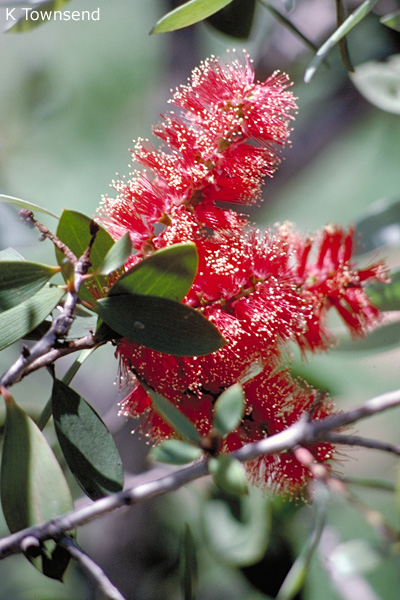General Description:
Melaleuca viridiflora is a small, erect or straggly tree, 3-10 metres high. Several varieties are recognised: var.attenuata, var.canescens and var.glabra. These differ from var.viridiflora in minor features of foliage and flowers.
The bark is grey to cream, fibrous and in papery layers. Leaves are broad, oval, flat, stiff, thick. smooth, dull dark green with 5-7 longitudinal veins. They are about 7-19 cm long x 2.5-5.5 cm wide. The new growth is hairy.
The flowers are usually greenish-cream but a small percentage of plants produce red to pink blooms. They are borne on dense cylindrical spikes 5-10 cm x 4-6 cm, the spikes being in groups of 1-4. The seed is formed in small woody capsules 0.3-0.5 cm x 0.4-0.6 cm.
The broad-leaved paperbark is adaptable to a wide range of soils and conditions but does particularly well on heavy clays which are waterlogged in the wet.
Propagation is easy from seed and cuttings are also successful. Red flowered forms should be propagated from cuttings to ensure that they produce plants true to the parent.

The common green flowered form of Melaleuca viridiflora
Photos: Keith Townsend

A red flowered form of Melaleuca viridiflora
Photos: Keith Townsend
 Australian Native Plants Society (Australia)
Australian Native Plants Society (Australia)